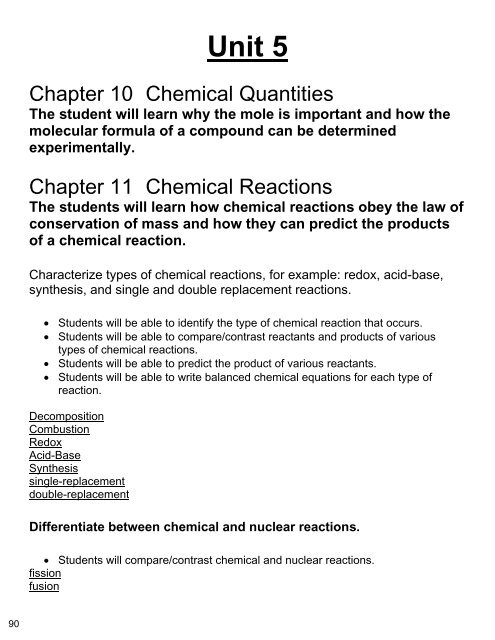You also want an ePaper? Increase the reach of your titles
YUMPU automatically turns print PDFs into web optimized ePapers that Google loves.
anched chains:<br />
Hexane - a 6-carbon chain<br />
rings:<br />
Isohexane - a branched-carbon chain<br />
Cyclohexane - a ringed hydrocarbon<br />
There appears to be almost no limit to the number of different structures that carbon can form. To add to the<br />
complexity of organic chemistry, neighboring carbon atoms can form double and triple bonds in addition to<br />
single carbon-carbon bonds:<br />
Single bonding Double bonding Triple bonding<br />
Keep in mind that each carbon atom forms four bonds. As the number of bonds between any two<br />
carbon atoms increases, the number of hydrogen atoms in the molecule decreases (as can be seen<br />
in the figures above).<br />
Simple hydrocarbons<br />
The simplest hydrocarbons are those that contain only carbon and hydrogen. These simple<br />
hydrocarbons come in three varieties depending on the type of carbon-carbon bonds that occur in the<br />
molecule.<br />
Alkanes<br />
Alkanes are the first class of simple hydrocarbons and contain only carbon-carbon single bonds. The<br />
alkanes are named by combining a prefix that describes the number of carbon atoms in the molecule<br />
with the root ending "ane". The names and prefixes for the first ten alkanes are given in the following<br />
table.<br />
87




